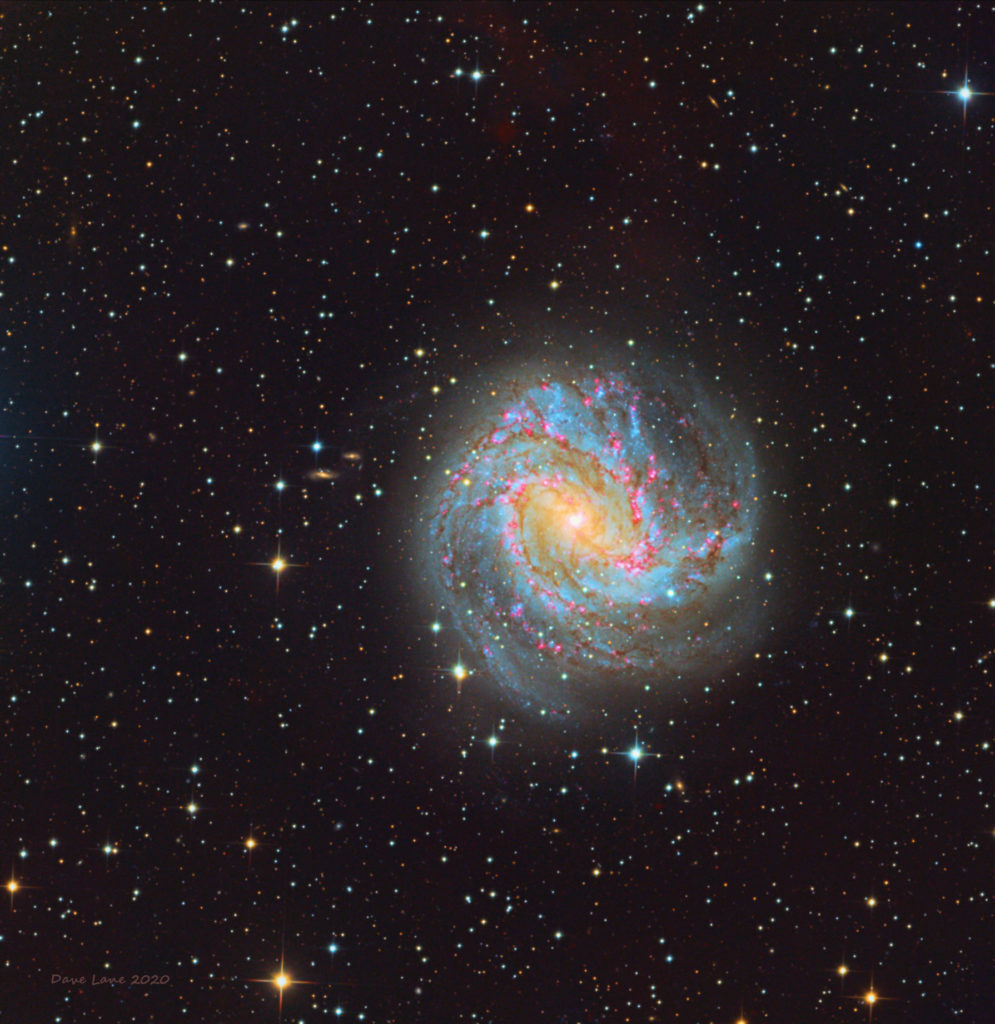Sky Report June 22 – June 28

All the planetary action is in the morning sky, so if you want to see a planet this month the best strategy is to get up early, when it’s nice and cool, and enjoy the sight of four planets plus the summer Milky Way.
The easiest-to-see planets are Jupiter, Saturn, and Mars, in that order from right to left. Jupiter and Saturn rise at 10 p.m. – later if your horizon is blocked by hills and trees — so they’re actually low in the east as the evening ends, but they’re at their highest at about 4 a.m., and then they’re a third of the way up the southern sky. Jupiter is the brightest object in the night sky so you can’t miss it. Saturn is as bright as the brightest stars and it’s a very short distance to the left of Jupiter. These two planets are a scant 6° apart. They remain very close together all year, although they’ll be very close together in the fall. Jupiter is almost 400 million miles from earth – 1600 times as far as our moon – and Saturn is more than 400 million miles beyond Jupiter. Saturn is so distant that, at 75 mph, it would take you 1300 years to drive there, assuming driving 24 hours a day without bathroom breaks.
Mars is as bright as Saturn and it’s well to the left and at the same altitude at 4 a.m. Mars is “only” 65 million miles away, but the earth is catching up to it and we’ll be much closer – and Mars will be much brighter – this October. Regular stargazers will notice Mars grow brighter week by week as the distance to it decreases.
Venus too is in the morning sky, where it’ll be until early next year, but it rises an hour and a half before the sun and it’s hard to spot. Look for it very low in the east-northeast beginning at 5 a.m. during morning twilight. Venus rises slightly earlier each morning and slowly grows easier to see.
While looking at the planets don’t fail to admire the Milky Way which stretches from the northeast, through overhead, to the southwest. Note that the Milky Way is not equally bright; it is thinner and fainter in the northeast than in the southwest. The center of the Milky Way, and it’s widest and brightest part, is just to the right of Jupiter.
The Sky Report is presented as a public service by the Stellar Vista Observatory, a nonprofit organization based in Kanab, Utah, which provides opportunities for people to observe, appreciate, and comprehend our starry night sky. Additional information is at www.stellarvistaobservatory.org. Send questions and comments to John@StargazingAdventures.org.






Comments are closed.